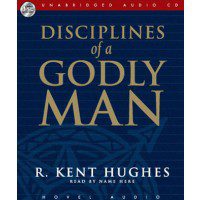10 August, AD 2013 – This time in history.
The Revelation of Jesus Christ to John 18:3 For all nations have drunk of the wine of the wrath of her fornication, and the kings of the earth have committed fornication with her, and the merchants of the earth are waxed rich through the abundance of her delicacies.
Where does the Early Church fit into this history?
The tragic answer includes many martyrs for Christ Jesus, including one who died on this day.
10 August, AD 258 Laurence, Deacon and Martyr, died (b. ca. 225). You can read of the atrocities and horrors of his torture and death in Foxe’s Book of Martyrs.
+
Let God’s curse fall on anyone, including us or even an angel from heaven, who preaches a different kind of Good News than the one we preached to you. – Galatians 1:8 NLT
AD 570 – Abū al-Qāsim Muḥammad – born in Mecca Arabia. Not everyone accepted God’s message transmitted through Muhammad. Even in his own clan there were those who rejected his teachings, and many merchants actively opposed the message.
+
The Holy Roman Empire – continued:
10 August AD 955 The Battle of Lechfeld was a decisive victory of the forces of Otto the Great, King of the Germans, over the Magyar leaders. The Magyars retreated to the Carpathian Basin, where they settled into a more agricultural way of life and were eventually Christianized.
Otto I is considered by many to be the founder of the Holy Roman Empire. In order to unify and control the major territories of Germany, he established the Church-State Alliance; this strengthened his power and decreased the power of the duchies. He gave large grants of royal land to bishops and abbots, who became his royal vassals and were obligated to provide him with military and political services. It was successful for both the Church and the State because it had church officials ruling the land, but allowed Otto the power to appoint them.
+
The fall of Rome
“Rome wasn’t built in a day and did not fall in one day.
AD 235- AD 476 – A blow-by-blow account of the fall of the Roman Empire.
The Empire Reorganized – The Church Prospers
AD 257/258 Emporer Valerian issued edicts against the Christians. This series of persecution was not a general attack as had come from Decius. This was targeted at the bishops and the upper class Christians.
In the 260’s the borders of the empire were being breached by barbarian tribes. The peace and security of the Roman Empire was threatened on every side. Emperor Gallienus sought to keep things in order – he could not protect the outer regions, so regional legions did their best. Territory was lost around the edges, but the empire was held intact.
AD 284 – Diocletian became the emperor, and brings Maximian into his confidence. The two men rule the empire as a team, Diocletian ruling in the east and Maximian in the west. In effect, there were now 4 emperors, each waging war against the barbarian hordes in a different region.
AD 300 – According to Eusebius, there were 40 churches in Rome. The third Christian century was coming to a good close – everything was good – the church was growing, church buildings were getting larger, and the Church was financially prosperous. The peace of Rome was good and the Christian Church was enjoying being a legitimate part of that peace.
AD 306-324 – Civil war between the two halves of the Empire. Constantine won control of both halves and moved the capital from Rome to Byzantium, later renamed: Constantinople.
+
Flavius Valerius Aurelius Constantinus Augustus – The first Roman emperor to convert to Christianity
AD 325 – Constantine played an influential role in the proclamation of the Edict of Milan, which decreed religious tolerance throughout the empire. He called the First Council of Nicaea in 325, at which the Nicene Creed was professed by Christians.
AD 337-395 – Emperor Constantine planned succession of the Roman Empire to be divided between his three sons, but war between them caused permanent division in AD 395.
9 August, AD 378 – The Visigoths defeated Eastern Roman Emperor Valens.
+
AD 383 – Augustine arrives in Milan. After his conversion takes the position as bishop of Hippo near his native Carthage, N. Africa, in 396, a position which he held until his death in AD 430.
AD 401-410 – Visigoths make incursions into northern Italy and sack Rome.
AD 429-435 – Vandals in N. Africa cut-off Roman grain supplies.
AD 440-455 – Huns threaten Rome, are paid off, and then attack; then sack Rome.
AD 476 – Last western emperor, Romulus Augustulus, is deposed by the barbarian general Odoacer who then rules Italy.
+
As you can see, “The Roman Empire fell long before Emperors gave up their false claims of leadership of the Roman citizens.
The Church became divided with Empire. The Church is up against continual opposition from without and within.
Faithfulness to God, Christ Jesus, and the Holy Spirit has given example to pagan Empires of a nation under God. Yet corruption of church leadership and division of the church has also weakened Christ’s church in the same way as divided and fallen Rome.
The Gospel has been taken into all the world and Rome had a role in God’s plan. Christ is opposed at every front by the enemies of the love of God and grace of the risen Christ Jesus.
Matthew 24:14 – And the Good News about the Kingdom will be preached throughout the whole world, so that all nations will hear it; and then the end will come.


